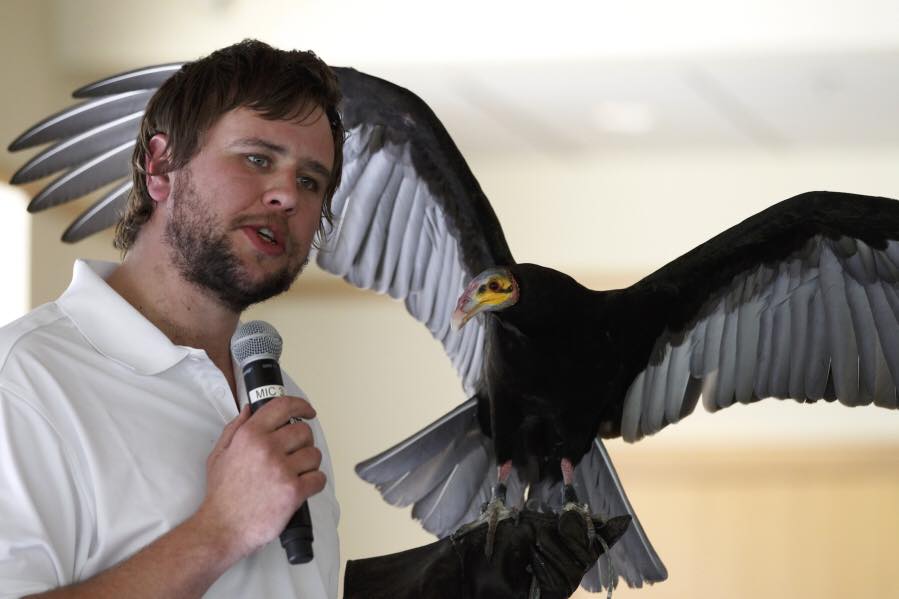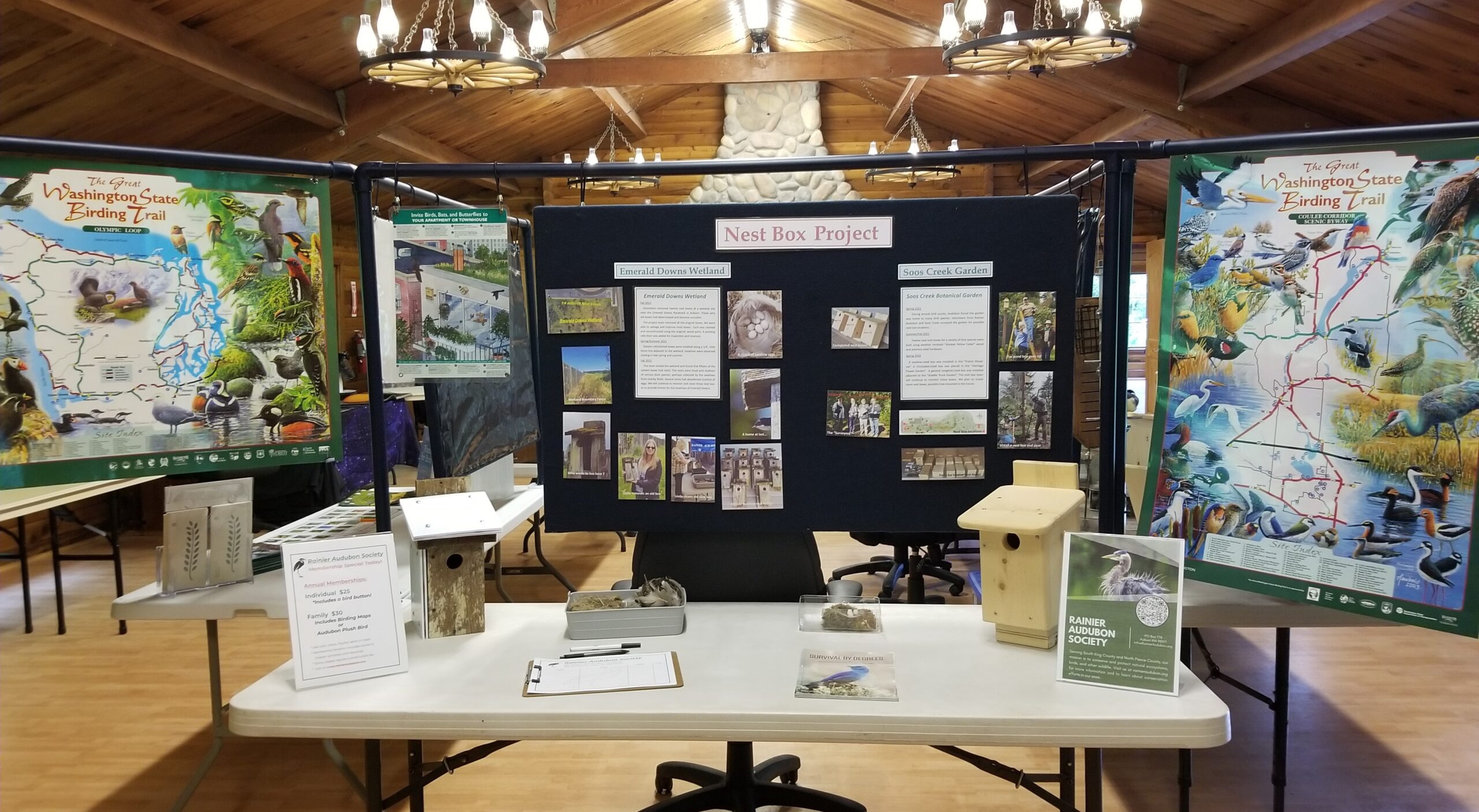
Watching Birds Migrate with BirdCast
Guest Article by Andy McCormick1
This is the first of two articles on bird migration. This month the focus is on predicting migration flights using next generation weather radar (NEXRAD). In July, we will report on the National Audubon Bird Migration Explorer.
A phenomenon of nature occurs over Washington every spring and most of us are not aware of it because we are sleeping. From late-March to the end of May each year millions of birds fly over us during spring nights. These birds include warblers, flycatchers, orioles, tanagers, and many species of shorebirds which are on their annual migration from the tropics to breeding areas in the woodlands, marshes, and prairies of the United States and Canada. Researchers believe many birds migrate at night because they use star patterns for navigation, and avoid overheating by flying in cooler air. Flying at night may also reduce the risk of being attacked by predators.
Spring migration occurs in waves over a period of weeks with bird numbers peaking on some nights and dipping on others. The number of birds flying overhead at night depends on the timing of the individual bird species, the direction of the wind, and overall weather patterns. Birds prefer a tail wind to help them travel long distances with less effort and will wait for the wind to shift so that it is coming from the south.
SPRING 2025 BIRD MIGRATION
The 2025 bird migration over Washington began with flights of 3.7 million birds on March 24 followed up with 6 million birds on March 25. A week of smaller flights was followed by nights with 2.5 and 4.7 million birds flying on April 4 and 9 respectively. There were steady flights of a million birds or fewer until the next big peak on the night of April 29 when 2.2 million birds crossed Washington and on April 30, over 4 million birds flew over the state. The migration reached its initial peak at over 8 million birds flying on the night of May 1.
After that first rush of birds, migration slowed for several nights with fewer than 200,000 birds crossing Washington, but the flights increased again with peaks of 2 and 2.5 million birds on May 5 and 6 respectively, and another high count of over 5 million birds on the night of May 18. Several more days of flights between 2 and 3 million birds filled the skies through May 24 when this column was written.
The charts below courtesy of BirdCast provide a picture of the highs and lows of the fluctuation of migration and the cumulative total of birds migrating compared to historical records for the State of Washington.
BIRDCAST ORGANIZES MIGRATION DATA
The information in the preceding paragraphs is now available to anyone with a computer or cell phone through the website for BirdCast, a collaboration of the Cornell Lab of Ornithology, Colorado State University, and UMass Amherst. The project originated in 2000 using knowledge gained from predicting weather patterns. The early bird forecasts and educational information was begun with the help of the National Audubon Society.
However, by 2018 BirdCast staff learned that weather radar could identify biological entities including birds, insects, and bats. This began a second phase of the development of BirdCast using artificial intelligence and big data research from next generation weather radar (NEXRAD). The migratory bird maps produced today are dynamic, showing the intensity of migration in brighter colors when more birds are flying. This BirdCast bird migration map shows the migration for any day during the migratory period. For example, on the BirdCast website try selecting the night of May 1, the biggest night of migration in 2025 and watch where birds are flying during the night as the sunset line crosses the North American continent. BirdCast estimates the bulk of bird migration over Washington will occur between April 30 and May 21.
HOW BIRDCAST HELPS BIRDS
BirdCast not only helps birders know when to go out to look for migrating neotropical warblers, tanagers, and flycatchers, it can also be used to help protect the birds themselves. By using AI (artificial intelligence, also known as machine learning) technology BirdCast integrates bird migration data with atmospheric condition data and has improved the predictive ability of the program to provide estimates of bird migration flights 7 to 14 days in advance. This is enough time to make conditions along bird migration routes safer for birds.
One major threat to birds during migration is a collision into the windows of large buildings that have lights on at night. Birds are attracted to light at night, and some will circle a building to exhaustion until they fall to the ground. Predictions of large night flights of birds are being used by Lights Out programs across the United States and Canada. The Lights Out programs pass the prediction along to city and town representatives to inform them of bird arrival dates and to request large buildings and those with many windows to turn off the lights at night so birds will not become disoriented and drawn to the buildings.
Information on the BirdCast website also describes how bird migration route information can be used to guide the placement of wind-powered turbines to reduce the potential of birds flying into the large, fast-moving turbine blades. The tips of the long blades typically move at over one hundred miles per hour and can reach speeds of 180 mph on windy days. Wind power has become an important source of carbon-free energy production, and more wind turbines are being installed to replace the use of coal-powered plants. The goal is to stop the burning of fossil fuels which adds carbon dioxide to the atmosphere and reduce its impact on global climate change, which itself is a threat to birds. Improving the placement of wind turbines is another way to make the world safer for birds.
Check out Malheur NWR (Harney County, OR, May 29, 2025)
https://dashboard.birdcast.info/region/US-OR-025
- Andy McCormick writes on birds and conservation issues. His work appears regularly in Eastside Audubon’s Corvid Crier and has been published in Northwest Science, Western Birds, and Rainier Audubon’s Heron Herald.
↩︎



